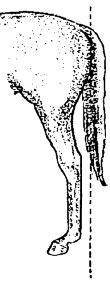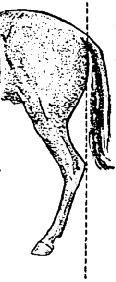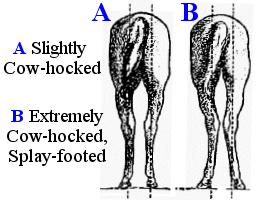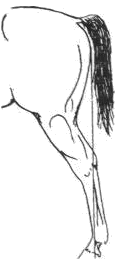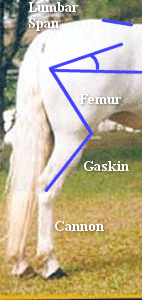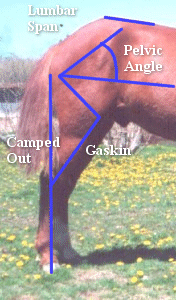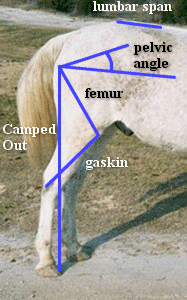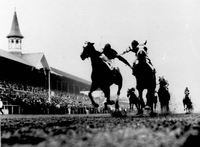An Analysis by Liz Graves
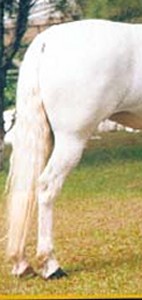 |
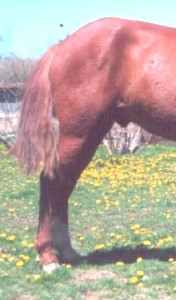 |
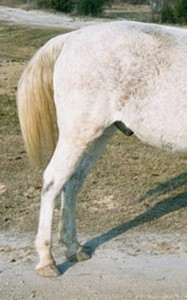 |
|
|
|
|
| When evaluating a horses’ hindquarters we must first understand the importance of its function to the horses body. The hindquarters are “the power source” for forward and upward movement. This power source is used to distribute the weight off the front quarters when the horse is in motion.
Just as with the front quarters, the hindquarters must be evaluated for the strong and weak points in the structure. This is important to be able understand how to correctly engage the hindquarters for maximum efficiency of gaits without undue stress.
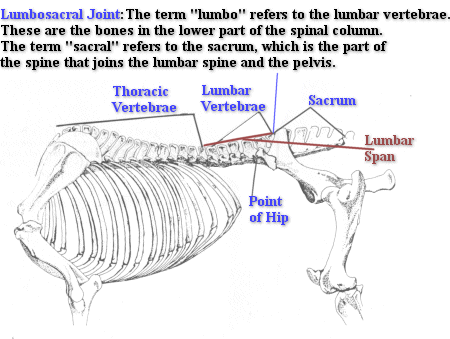 If this joint is too far behind the point of the hip can cause a horse to go more toward a ventoflexed (hollow) gait. When this joint is closer to aligned over the point of hip this lends the horse more to a dorsiflextion (raised back). The most ventro gait being the pace, less the stepped pace, sobreandondo, rack, corto/ largo. Level, the running walk, slight dorsiflextion towards a fox trot and the trot being the most dorsiflextion.
The area from the LS joint to the last rib is the Lumbar span. This area being long can also have a horse go toward a ventro gait and short to a dorsiflex gait. To long of functioning back can tend to be vento as well. But keep in mind length of back can be compensated by length of pelvis. A croup set higher than the wither can also cause a horse to be more ventro in gait. A high croup adds more weight to the front quarters making it harder for a horse to come off the ground in front and increasing concussion to the front hoofs. This can make for an uncomfortable ride. A well balanced horse from front to back (such as a good TWH) is:
Also in evaluation, take into consideration the hind limbs: are they straight or more angular.
So far what I have covered is just a small start in all the factors that can effect hindquarter engagement. In looking for the easier points first, you will start to develop a good eye for the finer ones. Our gaited horses can have quite a variation and combinations of hindquarter structure! This is more evident in some of the American breeds that are made up of several other breeds. Knowing what the gaits are and how they can be effected by a specific factor in the structure will lead to a better understanding of how to develop the natural gaits of our horses. It is also important to breed for the strong points of structure that each breed needs to support their signature gait.
These three horse are very different in how they are put together. Add the factor that we do not know in looking at a still picture what their genetic tendencies to gait are but we can tell by structure where they will excel or be limited by when we put all the elements together. |
